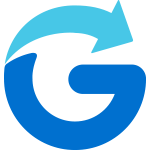If you’re expecting a Top 10 listicle, complete with polls and a quiz, this post might be a bit disappointing.
Whether it’s the classic “technician doesn’t have the right parts or equipment,” the infuriating “the technician doesn’t know how to fix the problem” or the ubiquitous “technician didn’t show up on time” these failure points make customers lose faith and guarantee your business loses money. There’s plenty of written material in the form of research and opinion pieces by industry experts about all the top reasons field service goes wrong at the technician level, and advice on how to fix it. So we won’t tackle that in this post.
In our conversations with field service organizations across industries and around the world, we’ve seen time and time again one huge reason that field service fails – and it has nothing to do with ill-equipped or unprepared field service technicians (again, a separate challenge for you to tackle at the leadership level).
Due to the fact that today people intuitively live mobile-first rather than stationary lives, one major reason field service fails is because customers are not at home or not prepared for field service appointments.
To be clear, customers are in the right here. They have busy lives. They’ve put their faith in you with a purchase. You owe them a speedy resolution when there’s a problem – a resolution that doesn’t require them to rearrange their entire day.
The real reason field service fails is a failure to communicate. When executed well and with your customer’s real needs and habits in mind, proactive communication about an upcoming field service can be the difference between success and failure. Most importantly, they have to trust that the information you’re giving them is accurate, and get useful updates about changes and delays in real-time.
Think about it. If a customer’s uninformed about their appointment details or the technician’s ETA, they are less likely to be on time or even home at all for that appointment. If a customer doesn’t feel safe or comfortable opening the door to a stranger, they may opt not to. And if something comes up that means a customer has to cancel or reschedule, how can you expect them to give you a heads up if you haven’t given them a simple and effective communications channel to do so?
If improving customer satisfaction for field services is at the top of your agenda this year, you’ll benefit from approaching the problem differently. Think beyond enabling your technicians to how you’re going to empower customers to set the stage for a successful interactions with proactive appointment updates (hopefully that include accurate ETAs and real-time location sharing). Your customers will get the service they deserve. Your technicians will happier and more fulfilled. And your business will reap the rewards. It’s important because it’s probably the only chance you’ll have to engage with your customers in person, on their home turf. It’s personal.
We’ve helped field service organizations adopt this mindset and launch engagement strategies that reduce customer not-at-homes by more than 20%, deflect appointment related call volume by more than 25% and save millions in wasted truck rolls and delayed revenue collection. Not to mention, their customers are happier and more vocal advocates for their brands.
Don’t let field service fail in 2018.


